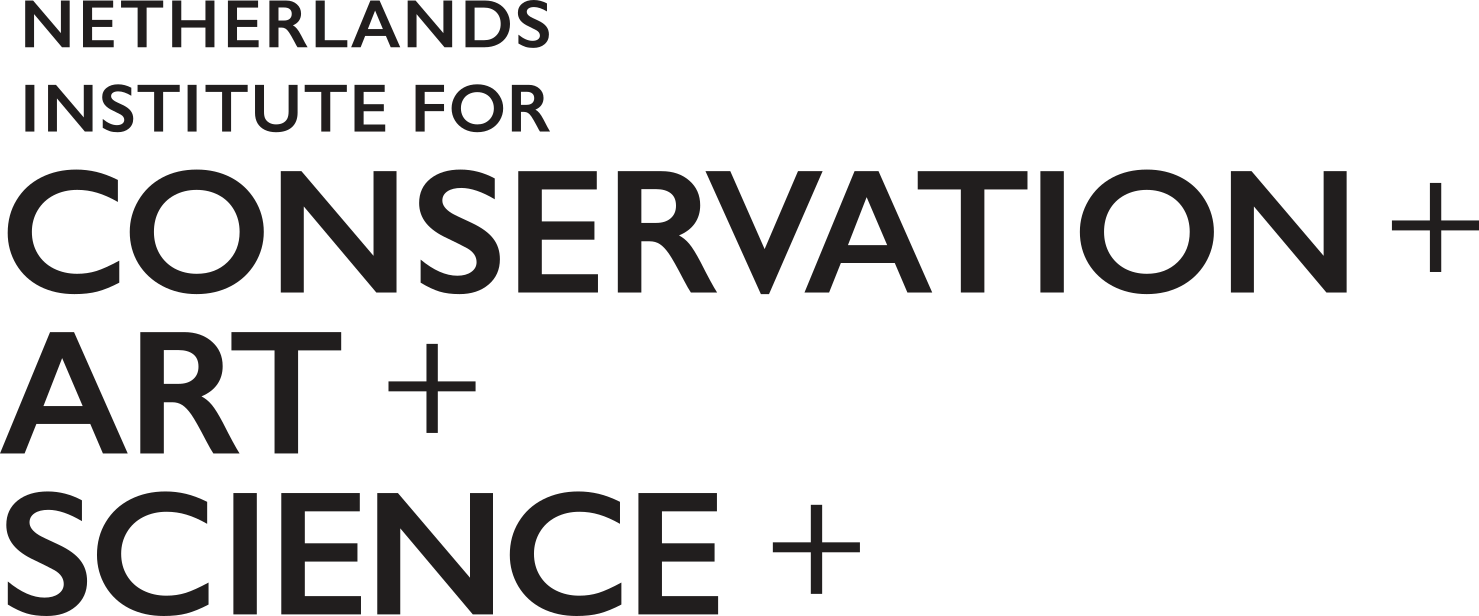Media
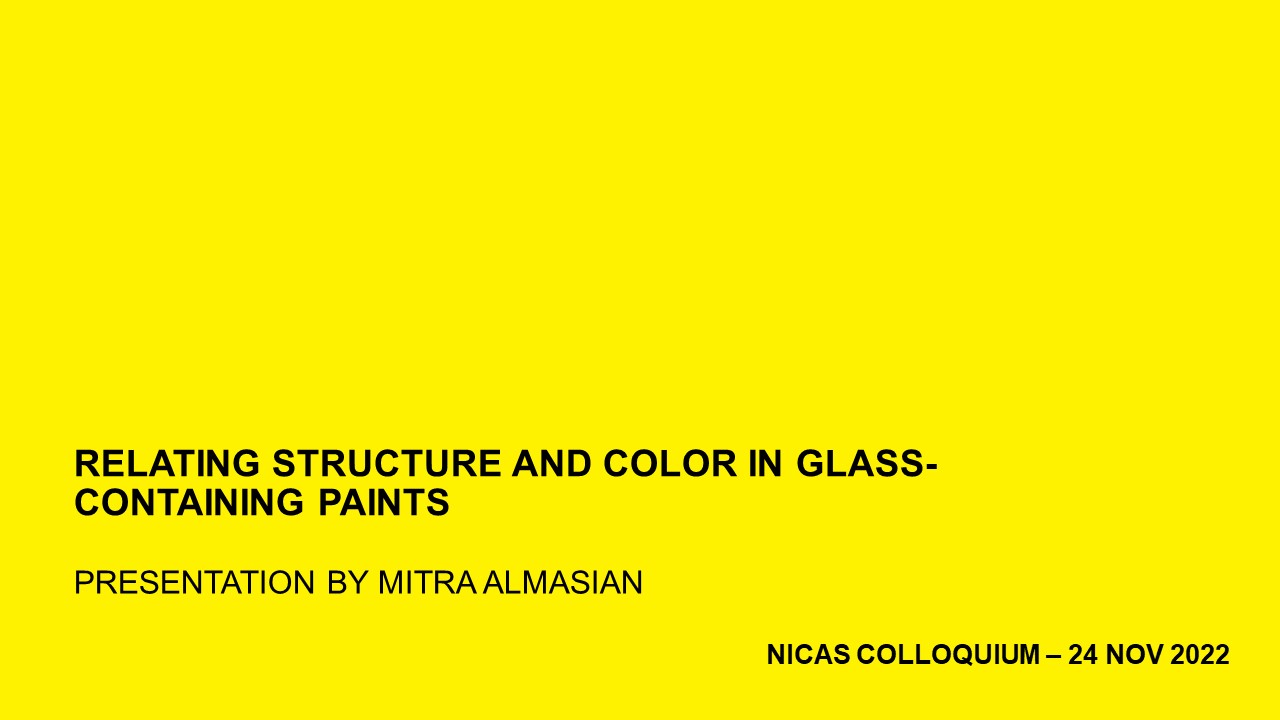
NICAS COLLOQUIUM

NICAS COLLOQUIUM
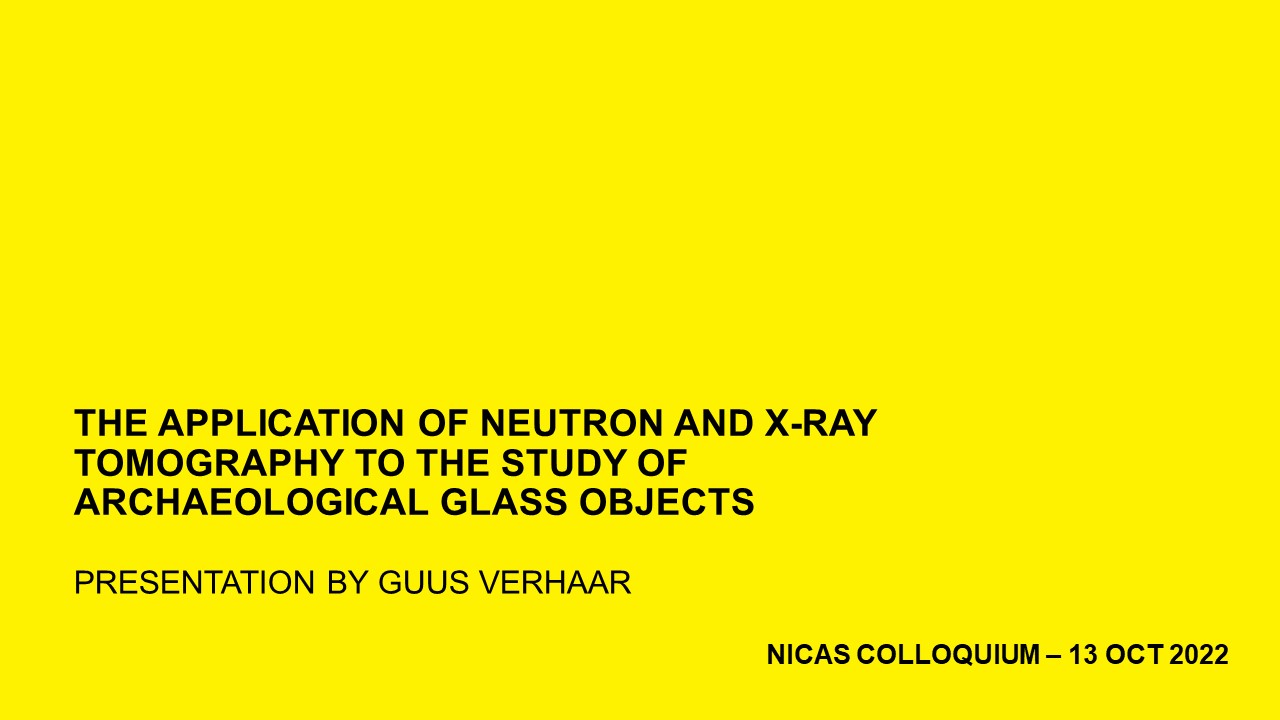
NICAS COLLOQUIUM
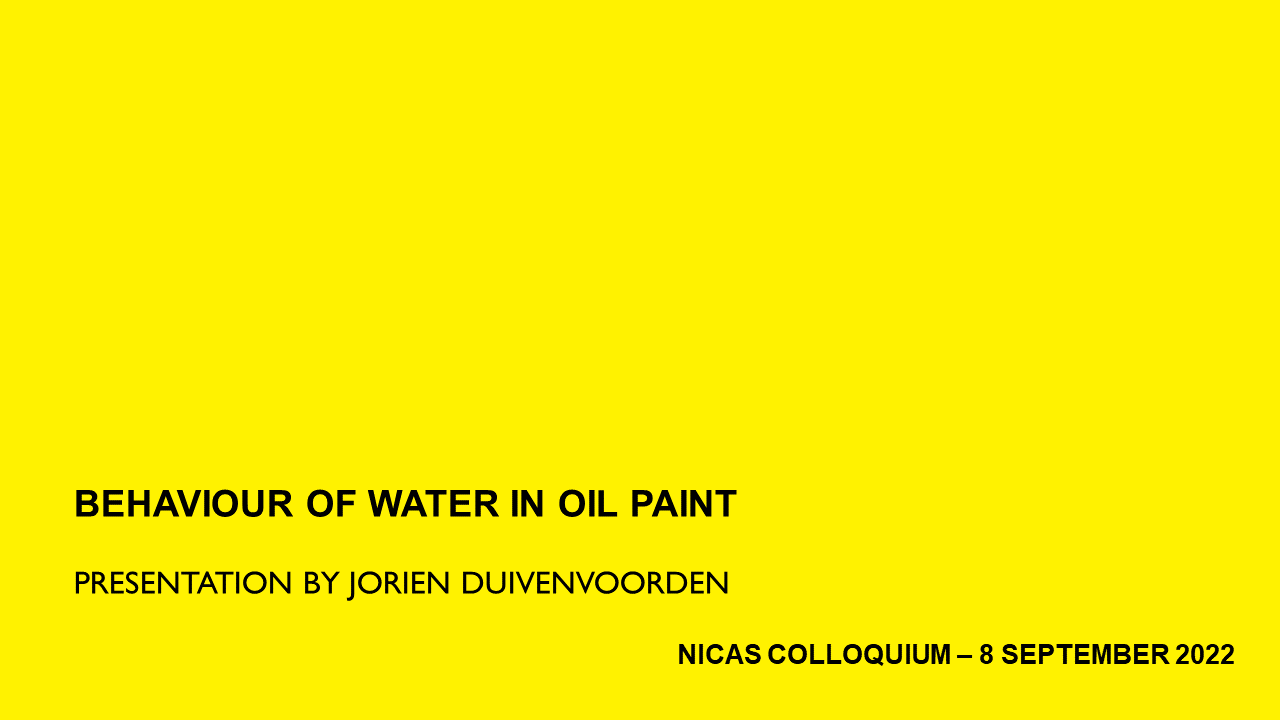
NICAS COLLOQUIUM
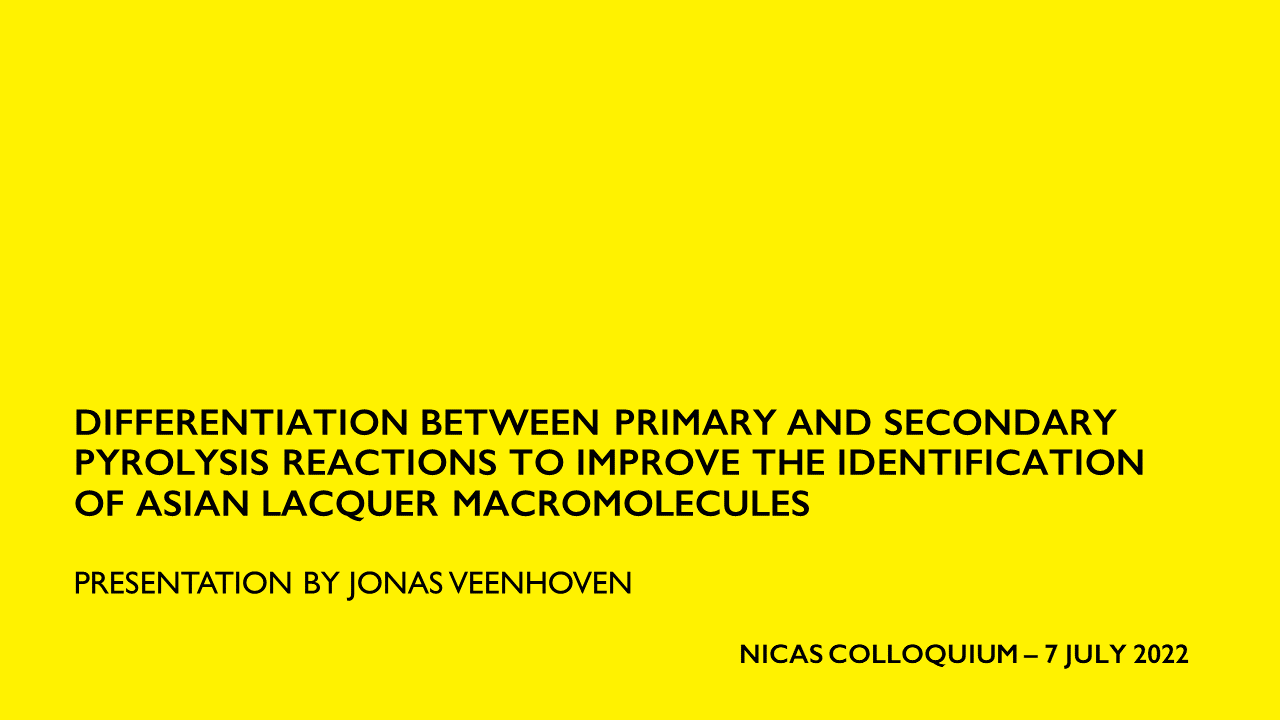
NICAS COLLOQUIUM
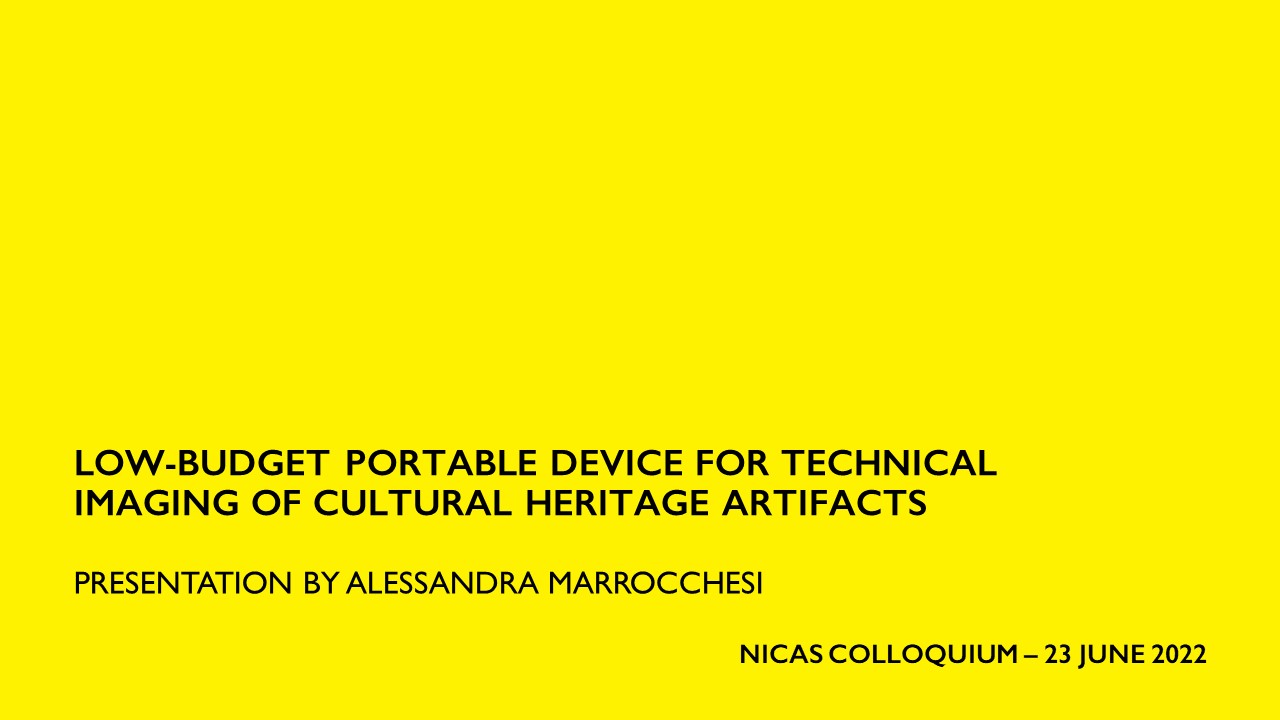
NICAS COLLOQUIUM
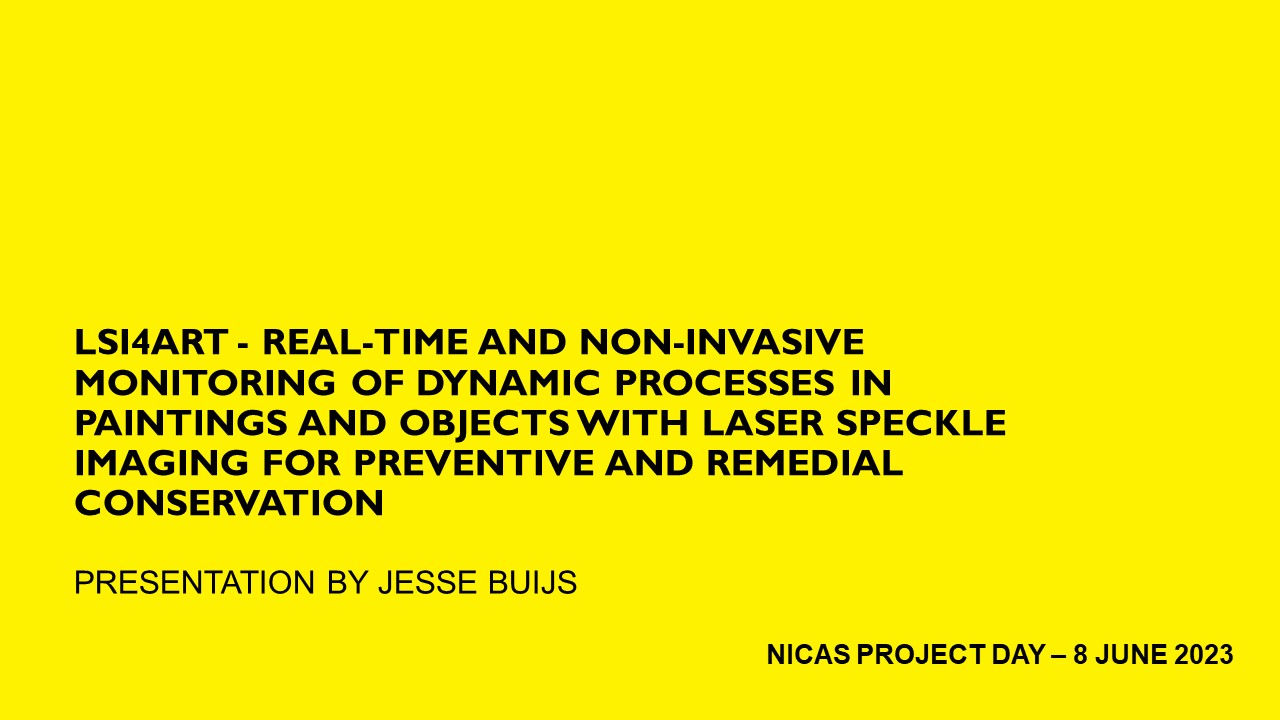
NICAS Project Day 2022
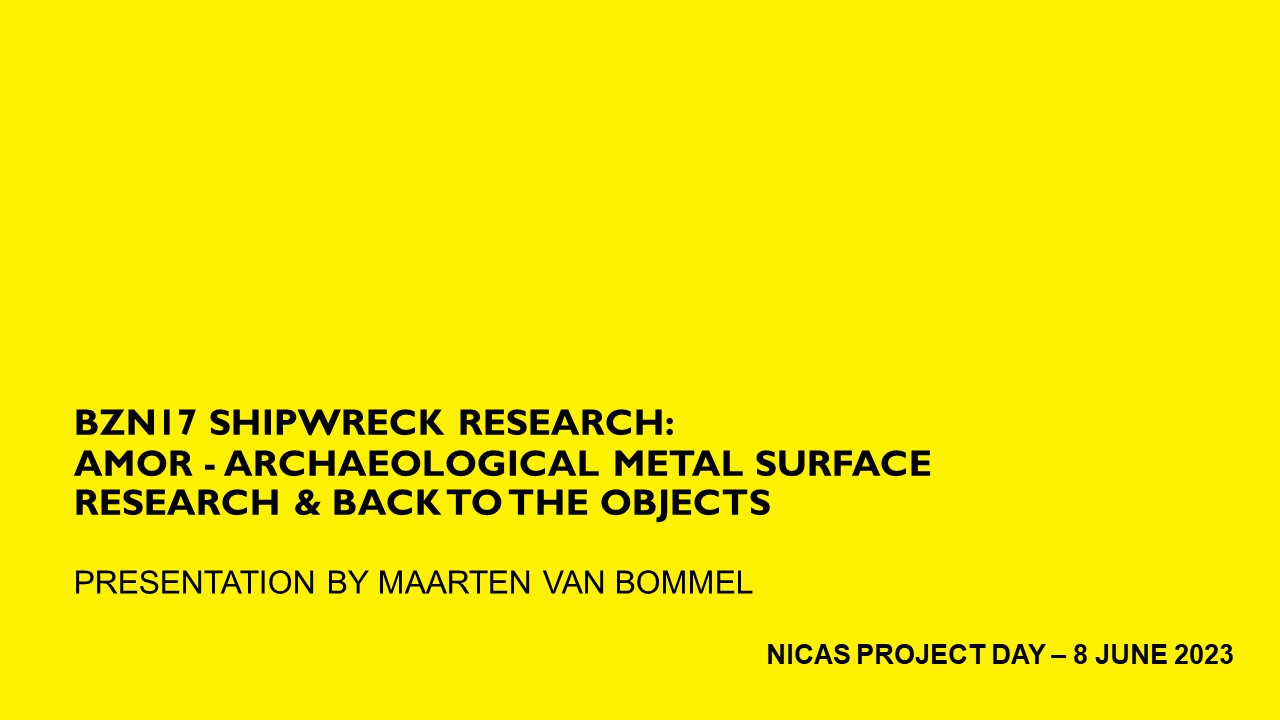
NICAS Project Day 2022
-
NICAS COLLOQUIUM
Mitra Almasian is a postdoctoral researcher at the Amsterdam UMC, University Medical Centers and a guest researcher at the Rijksmuseum. Her research focusses on the use of optical techniques for non-invasive imaging and diagnostics, with a main focus on OCT. She presents a NICAS project in which she investigated the influence of the addition of powdered-glass on morphology and visual appearance of cochineal and verdigris glazes. Therefore she has created a range of reconstructions based on historic recipes, which were studies using conventional techniques: OCT, hyperspectral imaging and ranking light photography. Furthermore, she presents a proof of principle combining depth-resolved spectroscopy and light-transport modelling in order to create virtual reconstructions. -
NICAS COLLOQUIUM
Jennifer Bonetti is a senior forensic scientist with the Virginia Department of Forensic Science in the Controlled Substances section. At first glance, forensic science and art conservation research may not seem to have much in common. Yet for both fields there is a divide between the surface-level public perception of the work and the fascinating detailed reality of the inner workings of the science conducted behind the scenes. In May 2022, I was fortunate enough to be given an inside look at the conservation work performed at the Ateliergebouw of the Rijksmuseum. Now, I’m hoping to provide a similarly illuminating experience by presenting insight into the forensic chemistry research that I’m conducting in collaboration with the University of Amsterdam. This work focuses on the application of data science to seized drug analysis, with particular emphasis on identifying compounds that are too similar for typical analytical techniques to differentiate. -
NICAS COLLOQUIUM
Guus Verhaar is a postdoctoral researcher at the Delft University of Technology. The Allard Pierson holds and exhibits the heritage collections of the University of Amsterdam. Part of this collection is group of 43 glass objects supposedly originating from Palmyra, Syria. There is, however, no supportive documentation as to their origins. A research project centered at the Delft University of Technology focuses on the non-destructive investigation of these objects, in order to learn more about their provenance, production techniques and condition. This presentation will focus on the application of neutron tomography and X-ray tomography to four objects from the Palmyra collection. Being sensitive to different elements in the periodic table, the two techniques complement each other well. In combination with compositional analysis, using x-ray fluorescence spectroscopy and gamma spectroscopy, we obtain more information on the potential origin of the artefacts. The benefits and challenges of this approach will be discussed in the presentation. -
NICAS COLLOQUIUM
In this presentation, Jorien Duivenvoorden speaks about the behavior of water in oil paint. It is increasingly recognised that water plays an important role in chemical degradation of oil paint, yet little is known about the concentration and distribution of water inside a painting. This talk will discuss two different approaches to enhance our understanding of an oil painting’s response to moisture. One way to look at a painting is as a multi-layered system, in which moisture transport takes place due to humidity fluctuations in the environment. We developed a computational model that predicts the behaviour of a multi-layered painting by considering the bulk sorption and diffusion properties of the individual layers. This approach assumes the layers to be homogeneous, even though from a molecular perspective, oil paint is a heterogeneous system consisting of a complex cross-linked polymer network interspersed with pigment particles The second part of this talk will therefore discuss our experimental approach to elucidate the local distribution and character of water inside oil paint on a molecular scale. -
NICAS COLLOQUIUM
Jonas Veenhoven is a joint PhD student at Ghent University, the University of Amsterdam and the KIK-IRPA, the Royal institute for cultural heritage in Brussels Belgium. He focusses on the molecular characterisation of Asian lacquer natural polymers and the evaluation of cleaning approaches on those polymers using chromatography and mass spectrometry. The analysis of polymerised Asian lacquers is challenging due to the complex cross-linked matrices. Pyrolysis hyphenated with gas chromatography-mass spectrometry (Py-GC-MS) is suitable for the analysis of Asian lacquers and relies on the introduction of solid samples and online thermal decomposition of the lacquer polymer into small molecules amenable to GC-MS. In this contribution the stepwise application of progressive flash pyrolysis temperatures, ranging between 300-700 °C, is presented as a useful approach to differentiate between primary pyrolysis reactions and secondary dehydration products. This optimisation has shown to improve the characterisation of the polymeric compositions of Asian lacquers and to distinguish between the different, intermolecular covalent bonds. -
NICAS COLLOQUIUM
Alessandra Marrocchesi graduated in 2019 with a Master’s degree in Physics from the University of Pisa. Since 2020 she is a PhD candidate at the University of Amsterdam within the EU-funded Marie Skłodowska-Curie Actions project Cultural Heritage Analysis for New Generations (CHANGE ITN). Her research focuses on the development of novel equipment and algorithms for the investigation of cultural heritage artifacts through technical photography. -
NICAS Project Day 2022
Dr. J. J. Buijs (Wageningen University & Research) Lsi4art - Real-time and non-invasive monitoring of dynamic processes in paintings and objects with laser speckle imaging for preventive and remedial conservation -
NICAS Project Day 2022
Prof. dr. M.R. van Bommel (University of Amsterdam) BZN17 shipwreck research: AMOR - Archaeological metal surface research & Back to the Objects
